I teach basic fly-fishing skills at Penn State University. Most of my students have little experience fishing for wild or native trout but have spent plenty of time targeting stocked trout. Our class takes at least three field trips to fish for wild trout on Spring Creek, near Bellefonte, PA. This fishery is full of wild trout which are not easy for inexperienced anglers to catch. Every semester, I witness students with extensive experience targeting stocked trout fail to catch a single wild brown trout during the combined six hours of class time spent fishing the creek. These students often tell me they have no problem catching fish on their favorite stocked stream or at their family’s private club, leaving them wondering why Spring Creek is such a well-known trout fishery. Salt is added to their wounds when they find out that one of their classmates, who has zero fishing experience, has caught several wild trout during the same period. The reason for their frustration is simple: they’re attempting to use stocked trout tactics when fishing for wild trout.
One thing I try to emphasize to my students is why the Penn State area’s wild and native trout fisheries are so special and why they are a major fly fishing destination. But I also explain how and why the tactics used for stocked trout may not be the best approach for some of our nearby trout streams, which are predominantly wild trout fisheries. This is not part of an effort to bash stocked trout, but rather to help anglers find success on the water, regardless of which type of trout they are chasing on any given day.
Stocked Trout
Most stocked trout are “programmed” to feed near the surface. From infancy, hatchery-reared fish learn to feed as pellets are dropped by hand or by machine onto the water’s surface. Once stocked, these hatchery fish will eventually acclimate to feeding on drifting insects, but the propensity to look up for food remains ingrained in their memories.
Swing It
This is a likely reason why swinging large wet flies — such as a Picket Pin (or most any other wet fly pattern, really) — works so well for freshly stocked trout. Most anglers capable of casting a wet fly across a stream and letting the current drag it along the surface are able to find success. This easy-to-achieve approach is one of the best for stocked fish due to how the fly rides high in the water column.

Hook Help
Swinging flies under tension also makes the task of hooking fish a simpler endeavor. Most often, trout taking a swung fly will hook themselves. Even when they do not, the strike is almost always felt by the angler — triggering the instinct to set the hook.
Rough Does It
Harshly presented flies and fly lines, a common feature of a beginner and intermediate casters, can also be a recipe for success when fishing for stocked trout. Anglers accidently flogging the surface with fly and line can stir up stocked fish below, making them think it’s feeding time, which can often ignite a stocked trout feeding frenzy.
Wild Trout
The presentations mentioned above — all of which involve creating a disturbance, whether intentionally or unintentionally — may be great for stocked fish, but will spook most wild and native trout, sending them fleeing for shelter.
Getting the Drift
Wild trout spend their entire lives feeding on organisms that naturally occur in the rivers and streams they call home. With few exceptions, wild trout (especially wary brown trout) prefer presentations that look and behave like their natural prey. Most often, this means insects drifting naturally with the current, rather than dragging across or through it. Delivering your fly so that it interacts naturally with the current (read: goes with the flow) will allow you to present your nymph or dry in a manner characteristic of the natural food in the water and thus more likely to entice a wild fish. These presentations, often called “dead-drifting,” are most commonly accomplished by casting directly upstream or casting across or downstream and introducing slack through aerial or on-water mends.
Setting the Hook
Unlike while fishing for stocked trout on tight-line presentations, when dead-drifting flies to wild trout, setting the hook successfully requires concentration and quick reflexes. It is very rare when fishing these presentations to wild trout that the angler will feel the fish strike. Most often, strikes will be seen or “detected” by noticing small changes in the drift of the fly line, leader, or flies through the water. When the strike is detected, anglers must react quickly with a swift hook set in order to connect with their quarry.
When to Swing
Though dead-drifted presentations are typically the key to success with wild trout, there are exceptions. During heavy hatches, as insects travel from stream bottom to surface to become winged adults, a swung presentation can be the best tactic as, during those times, it more accurately imitates the behavior of what trout are actively feeding on.
When to Play it Safe
When playing wild fish, I strive to keep my rod tip low to discourage the trout at the end of my line from creating too much commotion on the surface, especially in low water scenarios, as this can spook other nearby wild fish. This is a tip I learned during my first year competing for Fly Fishing Team USA.
But I keep a high rod tip when playing stocked trout and encourage them to flop on the water. I want the fish to create chaos on the surface. If you’ve ever visited a trout hatchery during feeding time, you might understand why. Many times, while fishing a stocked river or stream, I’ve witnessed a lull set in for everyone working the water. Then, one angler lucks into a fish, that fish flops around on the surface, and everyone fishing nearby starts hooking up. Why? The flopping fish sounded the dinner bell.

Final Word
When approaching any water, think about becoming a trout profiler. Understanding the behavior and habits of the fish you’re targeting will help you develop a solid gameplan. It’s not rocket science, you’re just offering the fish what they want to see. I cherish my wild trout waters but love any opportunity to catch trout. Just remember that what works for stocked trout may not fully translate for wild trout and vice-versa. Know your target and you’ll know success.




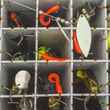
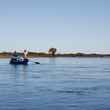





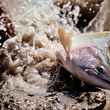
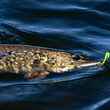



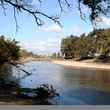



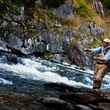
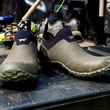



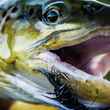
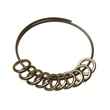


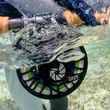

Comments
James replied on Permalink
Many thanks, Mr. Daniel. I really appreciate your honesty and candor expressed in this article.
Jim Rauch replied on Permalink
I find very important lessons in every article of yours I've read. Thank you.
Joel Helpenstell Mahill replied on Permalink
I would argue this doesnt necessarily apply to some wild Trout in Montana. I have caught many a brook and cutthroat in MT while draggin the fly against the current. Hard presentations are never appreciated, but they seem to love the idea of a bug trying to swim upstream against the current. Just my experience though. PA and MT are two very different states.
Chad Shmukler replied on Permalink
Joel Helpenstell Mahill replied on Permalink
Ah, so in certain circumstances, wild trout may not respond to such a presentation because it is not normal for their environment? Thanks Chad.
Chad Shmukler replied on Permalink
Tom from CT replied on Permalink
A very helpful article, but please feel fresh to bash stocked trout.
Pages